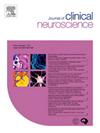Ibn Sina’s contributions to epilepsy management: Innovations from the Islamic Golden Age
IF 1.9
4区 医学
Q3 CLINICAL NEUROLOGY
引用次数: 0
Abstract
The historical understanding of epilepsy has evolved from supernatural beliefs in ancient Mesopotamia to scientific interpretations in the Islamic Golden Age. While early civilizations viewed epilepsy as a divine affliction, Greek and Roman physicians, notably Hippocrates, proposed a cerebral origin. However, significant advancements emerged during the Islamic Golden Age (7th–15th centuries), particularly through the works of Al-Razi and Ibn Sina (980–1037 CE).
Ibn Sina, or Avicenna, synthesized Greek, Roman, and Islamic medical knowledge in The Canon of Medicine, offering a systematic classification of epilepsy. He distinguished between idiopathic and symptomatic epilepsy, attributing its causes to cerebral dysfunction and humoral imbalances. His detailed descriptions of seizures and their clinical presentations demonstrated remarkable clinical insight. Ibn Sina also introduced innovative diagnostic techniques and treatments, including bloodletting, dietary adjustments, herbal remedies, and physical therapies. He recommended medicinal plants such as Lavandula stoechas and Pimpinella anisum, reflecting an advanced pharmacological approach.
This paper explores Ibn Sina’s contributions to epileptology, highlighting how The Canon of Medicine structured a more refined understanding of epilepsy. His emphasis on empirical observation, rational classification, and comprehensive treatment influenced medical traditions in both the Islamic world and medieval Europe. By integrating and expanding upon prior theories, Ibn Sina laid the groundwork for future advancements in neurology. His pioneering work represents a crucial step in the evolution of epilepsy research, bridging ancient concepts with emerging medical sciences.
伊本-西纳对癫痫治疗的贡献:伊斯兰黄金时代的创新
对癫痫的历史认识从古代美索不达米亚的超自然信仰发展到伊斯兰黄金时代的科学解释。早期文明将癫痫视为一种神灵的折磨,而希腊和罗马的医生,特别是希波克拉底,则提出了一种大脑起源。然而,在伊斯兰黄金时代(公元 7-15 世纪),特别是通过阿尔-拉齐(Al-Razi)和伊本-西纳(Ibn Sina,公元 980-1037 年)的著作,出现了重大进步。伊本-西纳,即阿维森纳,在《医学大全》中综合了希腊、罗马和伊斯兰医学知识,对癫痫进行了系统分类。他区分了特发性癫痫和症状性癫痫,将其原因归结为大脑功能障碍和体液失衡。他对癫痫发作及其临床表现的详细描述展现了非凡的临床洞察力。伊本-西纳还引入了创新的诊断技术和治疗方法,包括放血、饮食调整、草药疗法和物理疗法。本文探讨了伊本-西纳对癫痫病学的贡献,重点介绍了《医经》如何构建了对癫痫病更精细的理解。他对经验观察、合理分类和综合治疗的重视影响了伊斯兰世界和中世纪欧洲的医学传统。伊本-西纳整合并扩展了之前的理论,为未来神经病学的发展奠定了基础。他的开创性工作代表了癫痫研究发展的关键一步,将古老的概念与新兴的医学科学联系起来。
本文章由计算机程序翻译,如有差异,请以英文原文为准。
求助全文
约1分钟内获得全文
求助全文
来源期刊

Journal of Clinical Neuroscience
医学-临床神经学
CiteScore
4.50
自引率
0.00%
发文量
402
审稿时长
40 days
期刊介绍:
This International journal, Journal of Clinical Neuroscience, publishes articles on clinical neurosurgery and neurology and the related neurosciences such as neuro-pathology, neuro-radiology, neuro-ophthalmology and neuro-physiology.
The journal has a broad International perspective, and emphasises the advances occurring in Asia, the Pacific Rim region, Europe and North America. The Journal acts as a focus for publication of major clinical and laboratory research, as well as publishing solicited manuscripts on specific subjects from experts, case reports and other information of interest to clinicians working in the clinical neurosciences.
 求助内容:
求助内容: 应助结果提醒方式:
应助结果提醒方式:


